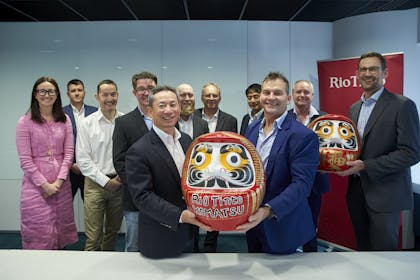Komatsu and Rio Tinto have reached a historic milestone, with Rio Tinto’s Pilbara operations in Western Australia accepting delivery of its 300th autonomous haulage system (AHS) truck this month.
Komatsu and Rio Tinto initially signed a Memorandum of Understanding in 2011 to deploy 150 AHS trucks to the Rio Tinto site, and, 13 years later, the partnership continues with both companies looking to accelerate the pace of mining automation.
Garry Povah, Komatsu Australia’s General Manager − Mining Automation, says this milestone gives both organisations the opportunity to reflect on the success of this groundbreaking partnership.
“We’ve led the industry in mining automation since 2008, when we commenced the Rio Tinto trial,” Povah said. “We delivered the first five AHS trucks to Rio mine sites in Australia in 2011, and it’s incredible to see how much the business has embraced this technology over the years, helping to make their mines safe, and also highly productive.
“AHS trucks are a crucial solution to both mine safety and addressing labour shortages in the sector. By removing human operators from potentially hazardous environments, AHS trucks significantly reduce the risk of accident and injury, and while enabling continuous operation that considerably impacts site productivity.”
The AHS fleet at Rio Tinto sites have completed 8.9 million operating hours and have moved over 4.8 billion tonnes of material, according to Povah – “all while improving their sites effective utilisation (EU%) by 15% – a remarkable feat.”
Currently, the 300 AHS trucks are spread across 10 of Rio Tinto’s Australian mine sites, and contribute to approximately 80% of the miner’s daily production capacity.
Jamie Sanders, Rio Tinto’s Global Head of Procurement, says: “This significant milestone is an excellent example of the partnership approach that Rio Tinto takes with its suppliers.
“Komatsu is a fantastic partner that has helped us improve our operations from a health and safety, and efficiency perspective,” Sanders says. “From the initial trial in 2008 to the work we do with Komatsu today, they have played a major role in helping us accelerate the automation of our mining processes. We look forward to continuing our collaboration into the future.”





